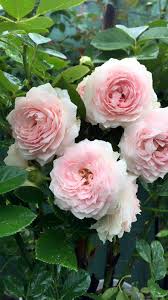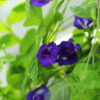**Rosa Gallica and Cultural Mythology: The Place of Rosa Gallica in Myths and Folklore**

**Introduction to Rosa Gallica in Mythology and Folklore**
Rosa Gallica, known for its exquisite beauty and rich fragrance, has transcended its botanical origins to become a symbol of love, beauty, and resilience in various myths and legends. This section delves into the captivating presence of Rosa Gallica in cultural mythology and folklore, exploring how this iconic flower has been woven into the tapestry of human storytelling across different civilizations and eras.
**Historical Context and Significance**
Rosa Gallica, commonly referred to as the French Rose or Gallic Rose, has a storied history that dates back thousands of years. Native to southern and central Europe, it has been cultivated and cherished since antiquity. Its significance extends beyond horticulture, as Rosa Gallica has been imbued with symbolic meanings and incorporated into various cultural narratives. From ancient Greece and Rome to medieval Europe, this flower has been a recurring motif in myths, legends, and folklore, embodying ideals of love, beauty, and immortality.
**Rosa Gallica in Ancient Mythology**
In ancient Greek mythology, roses were often associated with the goddess Aphrodite, the embodiment of love and beauty. According to one legend, the first rose blossomed from the tears of Aphrodite and the blood of her lover, Adonis. This myth captures the dual nature of Rosa Gallica as both a symbol of beauty and a reminder of the pain that often accompanies love. The Greeks also believed that roses could ward off evil spirits and bring good fortune, further embedding them in their cultural practices and beliefs.
Similarly, in Roman mythology, roses were linked to Venus, the goddess of love and beauty. The Romans celebrated the rose in their art, literature, and daily life, often using it in religious ceremonies and as a symbol of opulence and luxury. Rosa Gallica, with its deep red hue and enchanting fragrance, was particularly prized and became a symbol of the sensual and the divine.
**Medieval Legends and Symbolism**
During the medieval period, Rosa Gallica continued to hold significant cultural and symbolic value. It was often associated with the Virgin Mary in Christian iconography, symbolizing purity, virtue, and divine love. The rose garden, or “hortus conclusus,” became a popular motif in medieval art, representing the purity and sanctity of Mary. In these depictions, Rosa Gallica was often featured prominently, underscoring its importance in religious and cultural symbolism.
Medieval legends also spoke of knights and their quests for roses, which were often portrayed as tokens of true love or symbols of chivalry and honor. In these stories, the quest for Rosa Gallica represented the pursuit of an ideal, embodying the virtues of bravery, loyalty, and devotion. The rose was seen as a reward for noble deeds, a testament to the knight’s character and commitment.
**Rosa Gallica in Folktales and Fairy Tales**
Folktales and fairy tales from various cultures have also celebrated Rosa Gallica, imbuing it with magical properties and symbolic significance. In many of these stories, the rose serves as a catalyst for the plot, driving the narrative forward and symbolizing themes of transformation, love, and redemption.
One well-known example is the tale of “Beauty and the Beast,” where a rose plays a central role in the story’s unfolding. The rose, often depicted as a Rosa Gallica, represents the transformative power of love and the importance of inner beauty. As the story progresses, the rose becomes a symbol of the enduring bond between Beauty and the Beast, highlighting the themes of sacrifice, redemption, and the transformative nature of true love.
**Rosa Gallica in Eastern Folklore**
In Eastern folklore, Rosa Gallica is similarly revered for its beauty and symbolic meanings. In Persian culture, roses are often associated with the poet Rumi, who used the flower as a metaphor for divine love and spiritual longing. The rose garden, or “gulistan,” is a recurring theme in Persian literature, symbolizing paradise and the eternal quest for truth and beauty. In these works, Rosa Gallica serves as a bridge between the earthly and the divine, representing the soul’s journey towards enlightenment and union with the divine.
**Modern Interpretations and Cultural Relevance**
In contemporary culture, Rosa Gallica continues to inspire artists, writers, and creators, serving as a symbol of enduring beauty and timeless elegance. Its presence in modern literature, film, and visual arts speaks to its lasting impact on the human imagination. Today, Rosa Gallica is often used to evoke nostalgia, romance, and a connection to nature, bridging the past and present with its rich cultural heritage.
**Conclusion**
Rosa Gallica’s place in myths and folklore is a testament to its enduring appeal and symbolic power. From ancient Greece and Rome to medieval Europe and beyond, this iconic flower has captured the human imagination and inspired countless stories and legends. As a symbol of love, beauty, and resilience, Rosa Gallica continues to enchant and inspire, reminding us of the timeless themes and universal truths that transcend cultures and eras. Through its presence in cultural mythology and folklore, Rosa Gallica remains a beloved and enduring symbol of the human experience, reflecting our deepest hopes, fears, and aspirations.
**Rosa Gallica in Cultural Mythology: The Place of Rosa Gallica in Myths and Folklore**
**Rosa Gallica in European Folklore and Legends**
Rosa Gallica’s rich symbolism and beauty extend deeply into the tapestry of European folklore and legends, where it often embodies themes of love, sacrifice, and mysticism. This section explores the varied ways in which Rosa Gallica is interwoven into the cultural narratives of Europe, enriching the region’s mythological and folk traditions.
**The Rose in Medieval European Lore**
During the medieval period, Rosa Gallica became a powerful symbol within European lore, associated with chivalry and romantic ideals. One prevalent legend tells of a knight who embarks on a perilous quest to find a rare Rosa Gallica as a token of his undying love for a noble lady. The rose, often described as having the deepest red hue, symbolizes the knight’s pure intentions and the trials he must endure to prove his love and valor. This narrative highlights the rose as an emblem of noble pursuit and the intertwining of love and sacrifice.
Another medieval tale revolves around a maiden who tended a garden of Rosa Gallica. This garden was said to be enchanted, with each bloom representing a wish or a prayer. People from neighboring villages would visit the garden to admire the roses and seek the maiden’s blessings. The maiden’s purity and devotion, mirrored in the delicate blooms, symbolized hope and spiritual solace, turning Rosa Gallica into a conduit for divine favor and human aspiration.
**Rosa Gallica in Celtic Mythology**
In Celtic mythology, Rosa Gallica is linked to themes of rebirth and the cyclical nature of life. The Celts revered nature and believed in the spiritual significance of flora and fauna. Rosa Gallica, with its vibrant blooms and thorny stems, represented the balance between beauty and pain, life and death.
One prominent Celtic legend speaks of a mystical island covered in Rosa Gallica, which was said to be the dwelling place of the fairies. According to the tale, the fairies used the roses to weave magic that could heal the sick and bring prosperity to the land. The island, shrouded in mist and mystery, symbolized the elusive nature of paradise and the ethereal beauty of the natural world. The legend of the fairy island reflects the deep respect the Celts had for nature and their belief in the interconnectedness of all living things.
**Rosa Gallica in Norse Mythology**
Norse mythology also features Rosa Gallica, particularly in sagas and poems that emphasize its symbolism of beauty and resilience. In one tale, the goddess Freyja, who is associated with love and fertility, is depicted wearing a garland of Rosa Gallica. The roses, according to the myth, bestowed upon her the power to inspire love and fertility in all who beheld her. This association with Freyja underscores Rosa Gallica’s role as a symbol of life, love, and the perpetuation of beauty.
The harsh Norse environment also imbued Rosa Gallica with connotations of resilience and endurance. The ability of the rose to bloom amid adversity was seen as a metaphor for the strength and tenacity required to survive in the unforgiving northern landscapes. This duality of beauty and strength made Rosa Gallica a revered symbol in Norse culture.
**Rosa Gallica in Eastern European Folklore**
In Eastern European folklore, Rosa Gallica is often portrayed as a magical and protective plant. A common legend involves a village beset by a dragon, with the only protection being a hedge of Rosa Gallica that surrounded the village. The thorny roses served as a formidable barrier, symbolizing the community’s resilience and unity in the face of danger.
Another Eastern European tale tells of a young woman who weaves a crown of Rosa Gallica for her true love as he goes off to war. The crown, imbued with her love and prayers, is said to protect him from harm and ensure his safe return. This story highlights the rose as a symbol of fidelity and the enduring power of love and faith.
**Rosa Gallica in Persian and Middle Eastern Literature**
Rosa Gallica also holds a significant place in Persian and Middle Eastern literature, where it is often associated with themes of love, beauty, and spiritual transcendence. The Persian poet Rumi frequently used the rose as a symbol in his poetry, drawing parallels between the bloom’s beauty and the divine love that transcends earthly existence. In one of his famous works, Rumi writes about the rose garden as a metaphor for the soul’s journey toward divine love and enlightenment.
In medieval Persian literature, the rose garden, or “gulistan,” symbolizes paradise and the eternal quest for beauty and truth. Rosa Gallica, with its captivating fragrance and delicate petals, serves as a reminder of the fleeting nature of life and the enduring pursuit of spiritual fulfillment. This theme is prevalent in the works of other Persian poets such as Hafez, who often depicted the rose as a symbol of divine beauty and human longing.
**Rosa Gallica in Indian Mythology**
In Indian mythology, Rosa Gallica is often associated with the goddess Lakshmi, who represents wealth, beauty, and prosperity. According to legend, the goddess was born from a rose and her connection to the flower symbolizes her role as a bringer of good fortune and abundance. Rosa Gallica is used in various religious ceremonies and rituals to invoke the blessings of Lakshmi, highlighting its significance in Indian culture.
In Indian literature, Rosa Gallica is frequently mentioned in romantic and devotional poetry. The rose symbolizes the beauty of the beloved and the depth of the lover’s devotion, capturing the essence of human emotions and spiritual aspirations. Its presence in Indian art and culture reflects the timeless appeal of the rose as a symbol of love and beauty.
**Conclusion**
Rosa Gallica’s rich history and symbolic significance in myths and folklore across various cultures underscore its enduring appeal and timeless beauty. From the enchanted gardens of medieval Europe to the mystical realms of Celtic and Norse mythology, this iconic flower has captivated the human imagination and inspired countless stories and legends. Its presence in Persian and Indian literature further highlights its universal symbolism as an emblem of love, beauty, and spiritual transcendence. Through its enduring legacy in cultural mythology, Rosa Gallica continues to enchant and inspire, reminding us of the timeless themes and universal truths that bind us all.

